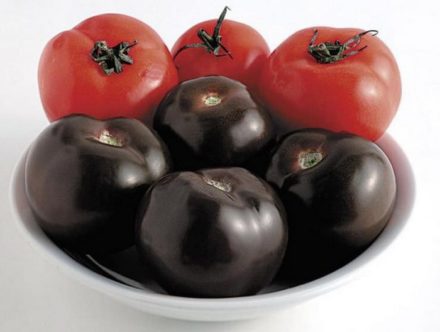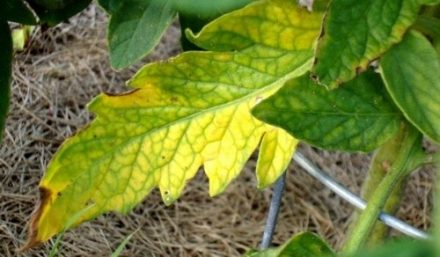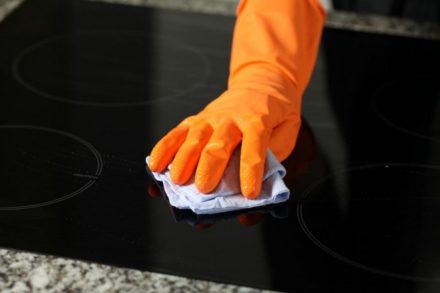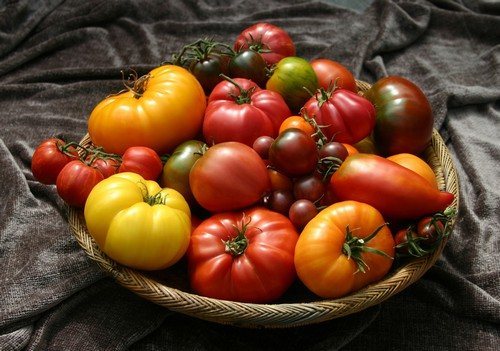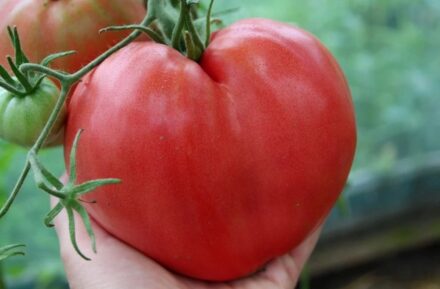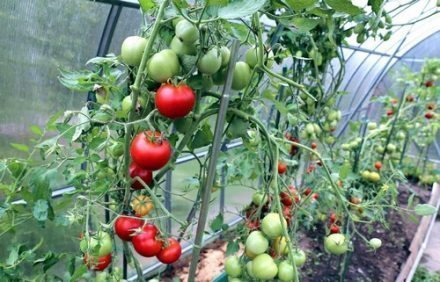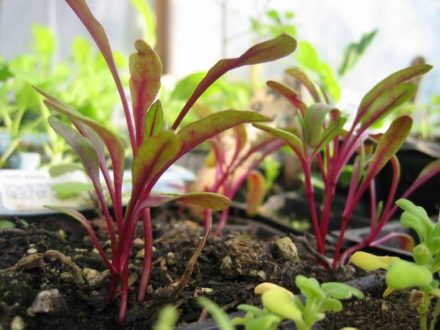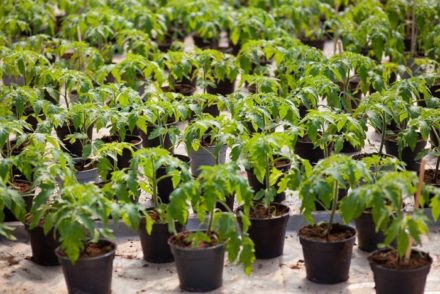In order for the tomato harvest to please the gardener all summer and autumn, the plant requires careful care. But tomatoes often do not need regular watering and weeding, and they need additional measures. To determine what tomatoes lack, you should pay attention to the leaves of the plant: they will tell you about all the problems.

Brown spots
If expressive brown spots appear on the leaves of tomatoes, this is the first sign of a fungal infection of cladosporiosis. The spots first appear on the lower leaves of tomatoes, but soon spread throughout the plant. This infection can be defeated if damaged bushes are treated promptly with an infusion of wood ash in milk whey or a solution of iodine with milk. If the problem has started, then it is better to use special means.
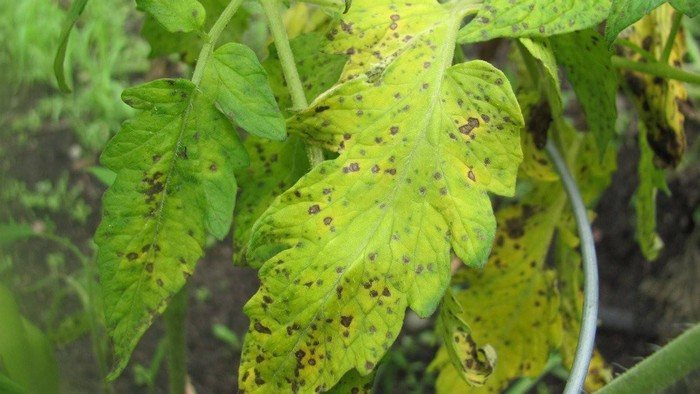
Mosaic pattern
Viral mosaic appears on tomato bushes most often due to its carrier - aphids. An unnatural mosaic pattern appears on the leaves, and soon the leaf curls and falls off. From the leaves the problem quickly spreads to the stem and fruits. The stem becomes brittle and green spots appear on the tomatoes. There are no effective treatments for this infection. To protect the harvest, damaged bushes are pulled out and burned.
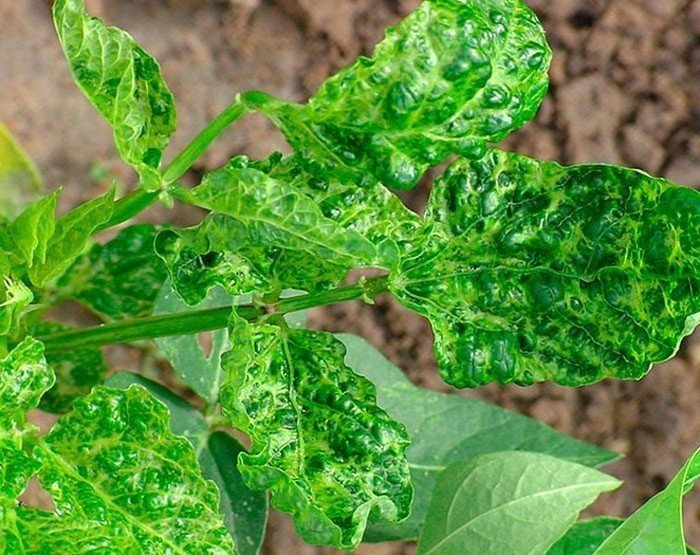
Rolled sheets
Curled tops of tomato bushes mean too much attention.Most often this happens if the tomatoes are over-watered. Excess water in the root system, oddly enough, is manifested by dry tops. Another option is applying herbicides to the foliage.
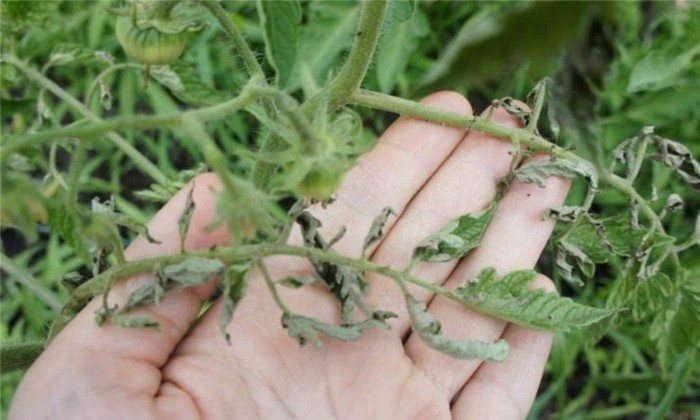
Leaf veins turn yellow
A yellow leaf is a sign of several problems or diseases at once. But if the veins begin to turn yellow first, and then the entire leaf, this means that the plant does not have enough nitrogen. This issue can be resolved by fertilizing with nitrogen fertilizers (ammonium nitrate, urea, compost).
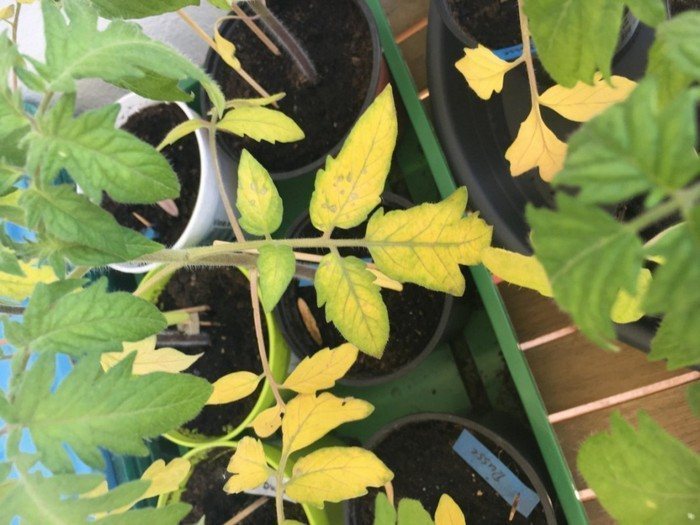
Purple color
The appearance of a beautiful purple hue on the leaves of seedlings may also indicate several problems. Most often this happens due to a sharp change in air temperature (more than 20 degrees) or due to a lack of phosphorus in the soil.
The issue of phosphorus deficiency can be solved simply: adding phosphorus fertilizers to the soil (superphosphate, ammophos, bone meal). But with temperature changes it is more difficult: you should cover the bushes with film at night or make a canopy during the day. In addition, tomatoes should be treated with strengthening agents.
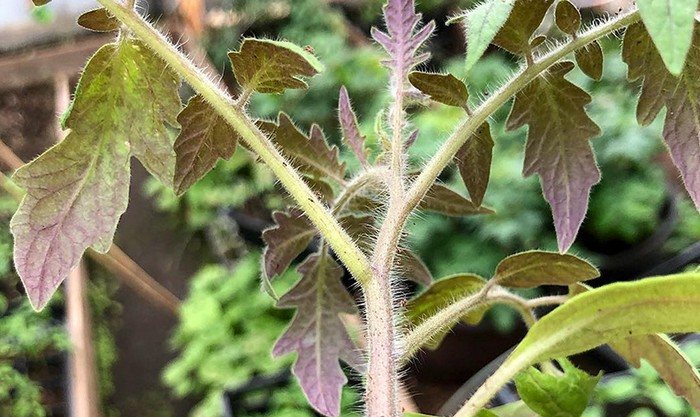
Dying Land
If the seedling leaf becomes wrinkled and the edges dry out, then these are symptoms of potassium deficiency in tomatoes. This rarely happens with tomatoes, but still, if tomatoes are grown in one place for many years, a potassium deficiency develops in the soil.
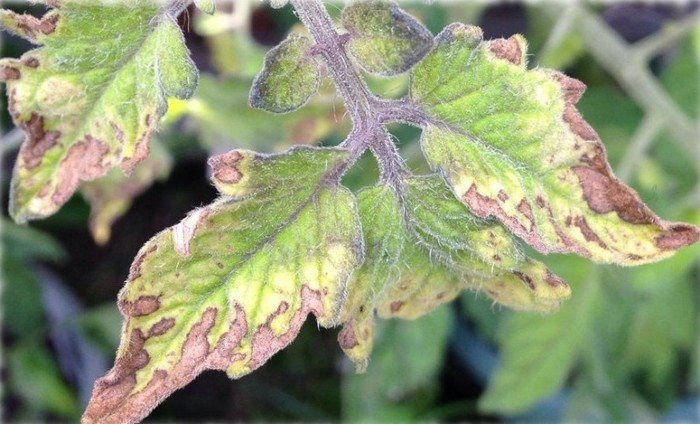
To prevent this from happening, potassium fertilizers (wood ash, potassium sulfate) should be applied during the fruiting phase.

Tomatoes can signal problems to gardeners.If you regularly carefully inspect the leaves of tomatoes, then large crop losses can be avoided by adjusting watering or fertilizing.


